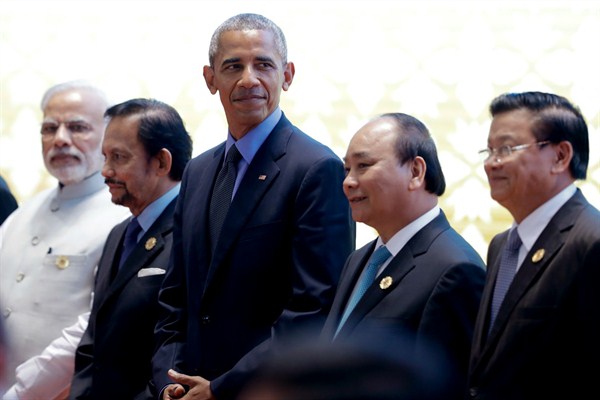September revealed the limits of U.S. President Barack Obama’s engagement in Asia. There was some good news, of course. On his last trip to the region, he became the first sitting U.S. president to visit Laos, where he acknowledged “the suffering and sacrifices on all sides” of America’s secret war in the 1960s and 1970s and pledged to mend ties between the two countries. Later in the month, he met with Myanmar’s de-facto leader, Aung San Suu Kyi, at the White House. There he announced that all remaining sanctions on Myanmar would be lifted, a reward for the country’s democratic elections last November, following decades of military rule.
But there was more bad news. The month started sourly when Air Force One touched down for the G-20 leaders summit in Hangzhou, China, only for the president to be denied a rolling staircase to disembark, a snub that resulted in altercations between U.S. and Chinese officials. The next day, the Philippines’ controversial new president, Rodrigo Duterte, publically called Obama a “son of a whore”; Obama canceled their scheduled meeting on the sidelines of the summit. Duterte later called for American soldiers to leave the southern island of Mindanao; announced the end of joint military exercises as well as naval patrols in the South China Seas; and expressed interest in forging closer ties with China, a significant move for Washington’s most loyal ally in Southeast Asia. But most startling, perhaps, was the decision by Vietnam to postpone ratification of the Trans-Pacific Partnership (TPP) until after November’s U.S. presidential elections, raising more questions about the viability of Obama’s signature trade deal.
The events of September offered an opportunity to review the success of the Obama administration’s so-called pivot to the region, also referred to as a rebalance. One difficulty in accessing the pivot lies in the fact that it was never laid out in a formal document, but was instead fashioned informally by the administration’s Asia advisers.

